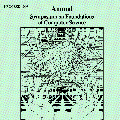Cut games are among the most fundamental strategic games in algorithmic game theory. It is well-known that computing an exact pure Nash equilibrium in these games is PLS-hard, so research has focused on computing approximate equilibria. We present a polynomial-time algorithm that computes $2.7371$-approximate pure Nash equilibria in cut games. This is the first improvement to the previously best-known bound of $3$, due to the work of Bhalgat, Chakraborty, and Khanna from EC 2010. Our algorithm is based on a general recipe proposed by Caragiannis, Fanelli, Gravin, and Skopalik from FOCS 2011 and applied on several potential games since then. The first novelty of our work is the introduction of a phase that can identify subsets of players who can simultaneously improve their utilities considerably. This is done via semidefinite programming and randomized rounding. In particular, a negative objective value to the semidefinite program guarantees that no such considerable improvement is possible for a given set of players. Otherwise, randomized rounding of the SDP solution is used to identify a set of players who can simultaneously improve their strategies considerably and allows the algorithm to make progress. The way rounding is performed is another important novelty of our work. Here, we exploit an idea that dates back to a paper by Feige and Goemans from 1995, but we take it to an extreme that has not been analyzed before.
翻译:剪切游戏是算法游戏理论中最根本的战略游戏之一。 众所周知, 在这些游戏中计算完全纯净的纳什平衡是PLS- 硬, 因此研究的重点是计算近似平衡性。 我们展示了一种多元时间算法, 计算了 27371美元, 近似于 纯纳什平衡性。 这是首次改进了先前最著名的3美元约束, 原因是Bhalgat、 Chakraborty 和 EC 2010 的 Khanna 工作。 我们的算法基于Caragiannis、 Fanelli、 Gravin 和 Skopalik 提议的一般配方, 并且从2011 FOCS 开始应用到 几场潜在游戏。 我们工作的第一个新颖之处是引入一个阶段, 能够同时确定能够大幅改善自身公用事业的玩家的子集。 这是通过半确定程序、 Chakraborbty 程序的一个负面目标值, 保证在给一个特定玩家组之前不可能有如此大的改进。 否则, 随机的 SDP 解决方案的四轮翻版的折式组合将无法实现。 我们同时选择的游戏的游戏的游戏可以让另一个游戏的玩家进行。



